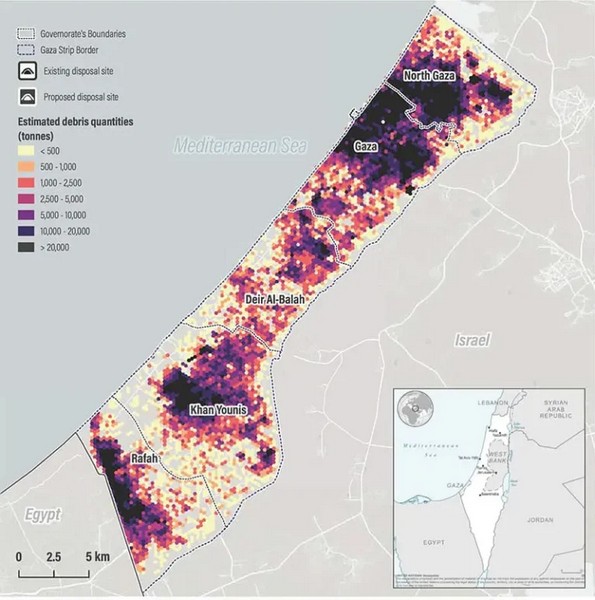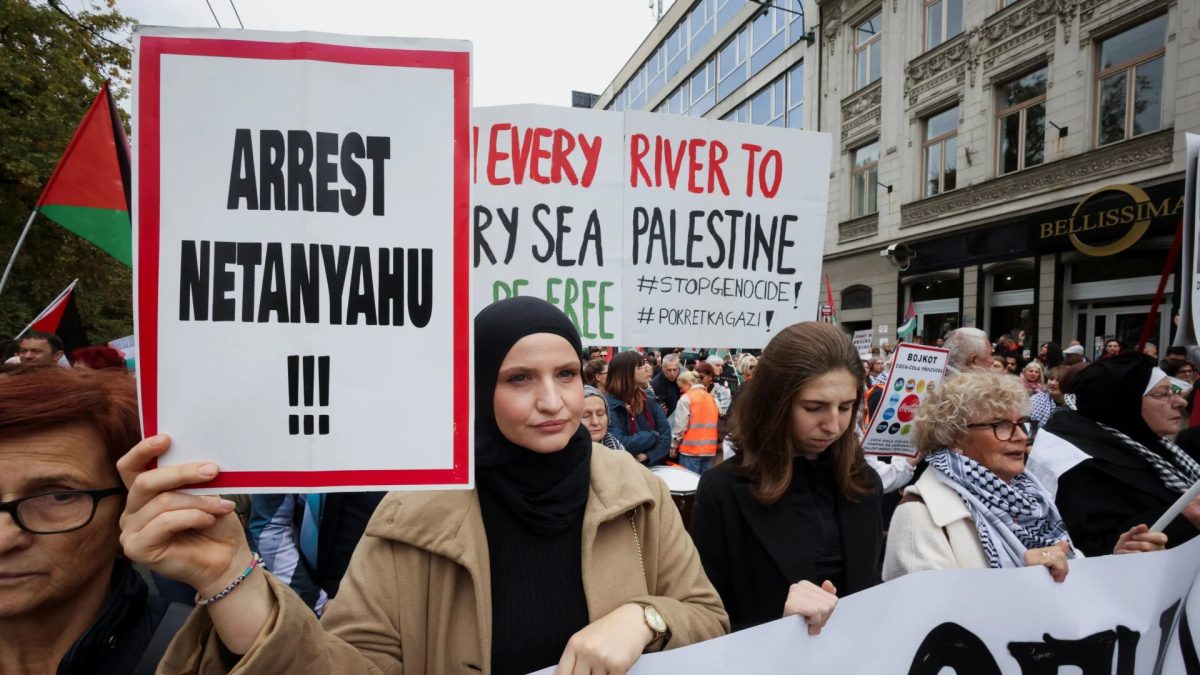By Jeffrey D. Sachs and Sybil Fares
Real peace demands Palestinian statehood, Ukrainian neutrality and the courage to defy the war lobby.
23 Oct 2025 – United States President Donald Trump styles himself as a peacemaker. In his rhetoric, he claims credit for his efforts to end the wars in Gaza and Ukraine. Yet beneath the grandstanding lies an absence of substance, at least to date.
The problem is not Trump’s lack of effort, but his lack of proper concepts. Trump confuses “peace” with “ceasefires,” which sooner or later revert to war (typically sooner). In fact, American presidents from Lyndon Johnson onward have been subservient to the military-industrial complex, which profits from endless war. Trump is merely following in that line by avoiding a genuine resolution to the wars in Gaza and Ukraine.
Peace is not a ceasefire. Lasting peace is achieved by resolving the underlying political disputes that led to the war. This requires grappling with history, international law and political interests that fuel conflicts. Without addressing the root causes of war, ceasefires are a mere intermission between rounds of slaughter.
Trump has proposed what he calls a “peace plan” for Gaza. However, what he outlines amounts to nothing more than a ceasefire. His plan fails to address the core political issue of Palestinian statehood. A true peace plan would tie together four outcomes: the end of Israel’s genocide, Hamas’s disarmament, Palestine’s membership in the United Nations, and the normalisation of diplomatic ties with Israel and Palestine throughout the world. These foundational principles are absent from Trump’s plan, which is why no country has signed off on it despite White House insinuations to the contrary. At most, some countries have backed the “Declaration for Enduring Peace and Prosperity,” a temporising gesture.
Trump’s peace plan was presented to Arab and Muslim countries to deflect attention from the global momentum for Palestinian statehood. The US plan is designed to undercut that momentum, allowing Israel to continue its de facto annexation of the West Bank and its ongoing bombardment of Gaza and restrictions of emergency relief under the ruse of security. Israel’s ambitions are to eradicate the possibility of a Palestinian state, as Prime Minister Benjamin Netanyahu made explicit at the UN in September. So far, Trump and his associates have simply been advancing Netanyahu’s agenda.
Trump’s “plan” is already unravelling, much like the Oslo Accords, the Camp David Summit, and every other “peace process” that treated Palestinian statehood as a distant aspiration rather than the solution to the conflict. If Trump really wants to end the war – a somewhat doubtful proposition – he’d have to break with Big Tech and the rest of the military-industrial complex (recipients of vast arms contracts funded by the US). Since October 2023, the US has spent $21.7bn on military aid to Israel, much of it returning to Silicon Valley.
Trump would also have to break with his donor-in-chief, Miriam Adelson, and the Zionist lobby. In doing so, he would at least represent the American people (who support a state of Palestine) and uphold American strategic interests. The US would join the overwhelming global consensus, which endorses the implementation of the two-state solution, rooted in UN Security Council resolutions and ICJ opinions.
The same failure of Trump’s peacemaking holds in Ukraine. Trump repeatedly claimed during the campaign that he could end the war “in 24 hours”. Yet what he has been proposing is a ceasefire, not a political solution. The war continues.
The cause of the Ukraine war is no mystery – if one looks beyond the pablum of the mainstream media. The casus belli was the push by the US military-industrial complex for NATO’s endless expansion, including to Ukraine and Georgia, and the US-backed coup in Kyiv in February 2014 to bring to power a pro-NATO regime, which ignited the war. The key to peace in Ukraine, then and now, was for Ukraine to maintain its neutrality as a bridge between Russia and NATO.
In March-April 2022, when Turkiye mediated a peace agreement in the Istanbul Process, based on Ukraine’s return to neutrality, the Americans and the British pushed the Ukrainians to walk out of the talks. Until the US clearly renounces NATO’s expansion to Ukraine, there can be no sustainable peace. The only way forward is a negotiated settlement based on Ukraine’s neutrality in the context of mutual security of Russia, Ukraine, and the NATO countries.
Military theorist Carl von Clausewitz famously characterised war as the continuation of politics with other means. He was right. Yet it is more accurate to say that war is the failure of politics that leads to conflict. When political problems are deferred or denied, and governments fail to negotiate over essential political issues, war too often ensues. Real peace requires the courage and capacity to engage in politics, and to face down the war profiteers.
No president since John F Kennedy has really tried to make peace. Many close observers of Washington believe that it was Kennedy’s assassination that irrevocably put the military-industrial complex in the seat of power. In addition, the US arrogance of power already noted by J William Fulbright in the 1960s (in reference to the misguided Vietnam War) is another culprit. Trump, like his predecessors, believes that US bullying, misdirection, financial pressures, coercive sanctions and propaganda will be enough to force Putin to submit to NATO, and the Muslim world to submit to Israel’s permanent rule over Palestine.
Trump and the rest of the Washington political establishment, beholden to the military-industrial complex, will not on their own account move beyond these ongoing delusions. Despite decades of Israeli occupation of Palestine and more than a decade of war in Ukraine (which started with the 2014 coup), the wars continue despite the ongoing attempts by the US to assert its will. In the meantime, the money pours into the coffers of the war machine.
Nonetheless, there is still a glimmer of hope, since reality is a stubborn thing.
When Trump soon arrives in Budapest to meet with Russian President Vladimir Putin, his deeply knowledgeable and realistic host, Hungary’s Prime Minister Viktor Orban, can help Trump to grasp a fundamental truth: NATO enlargement must end to bring peace to Ukraine. Similarly, Trump’s trusted counterparts in the Islamic world – Turkiye’s President Recep Tayyip Erdogan, Saudi Arabia’s Crown Prince Mohammed bin Salman, Egypt’s President Abdel Fattah el-Sisi, and Indonesia’s President Prabowo Subianto – can explain to Trump the utter necessity of Palestine as a UN member state now, as the very precondition of Hamas’s disarmament and peace, not as a vague promise for the end of history.
Trump can bring peace if he reverts to diplomacy. Yes, he would have to face down the military-industrial complex, the Zionist lobby and the warmongers, but he would have the world and the American people on his side.
Jeffrey D. Sachs, Professor of Sustainable Development and Professor of Health Policy and Management at Columbia University, is Director of Columbia’s Center for Sustainable Development and the UN Sustainable Development Solutions Network.
27 October 2025
Source: transcend.org










